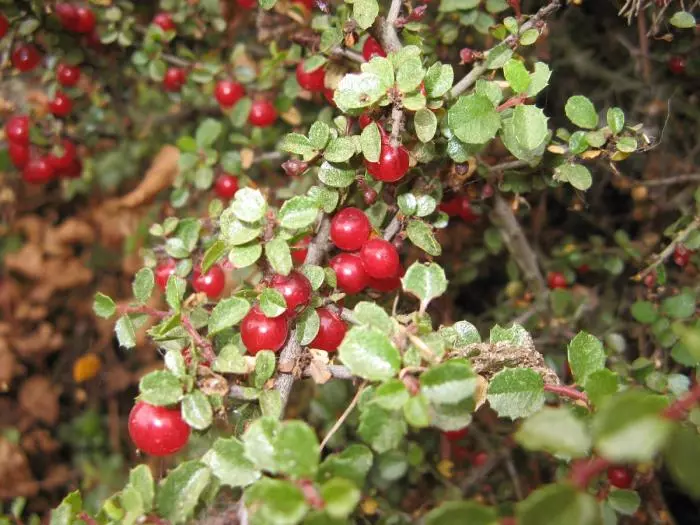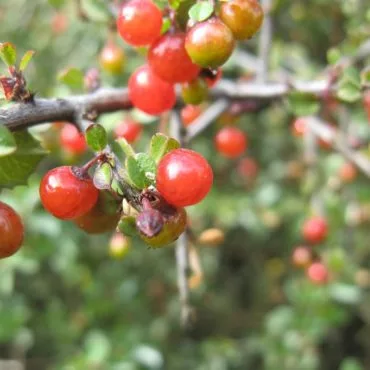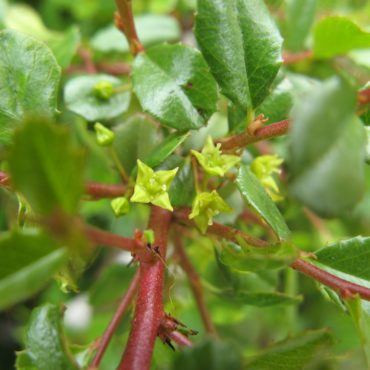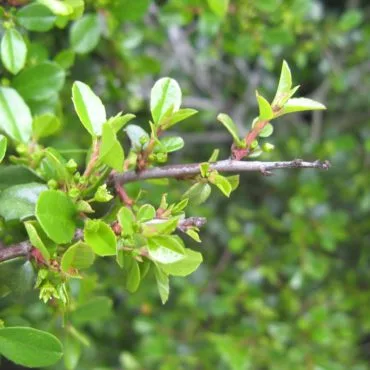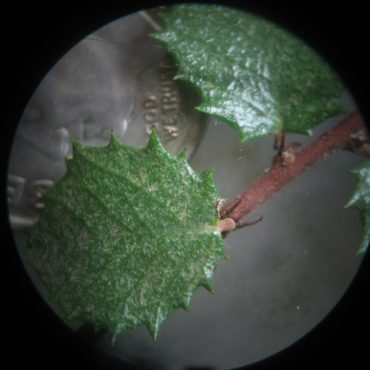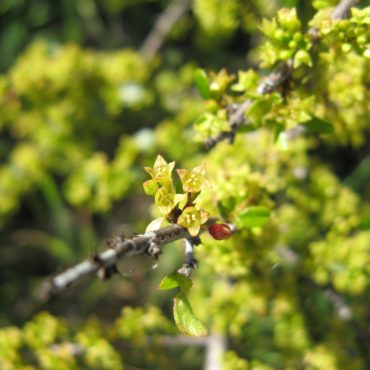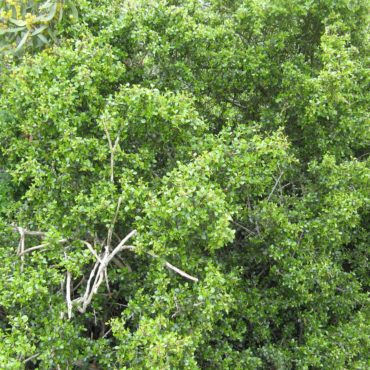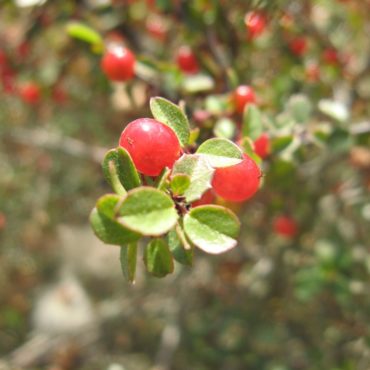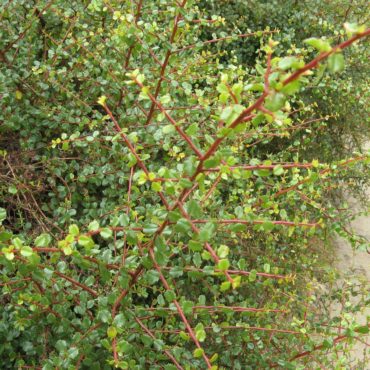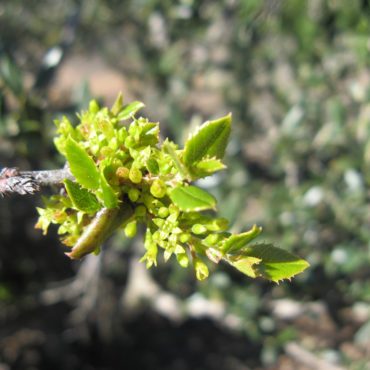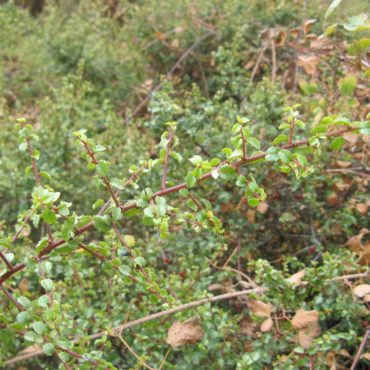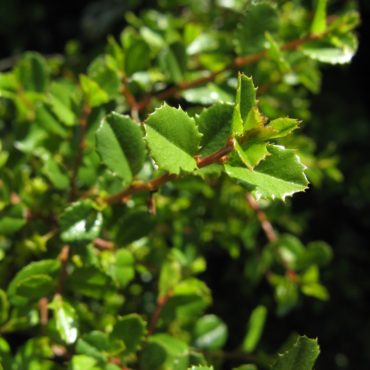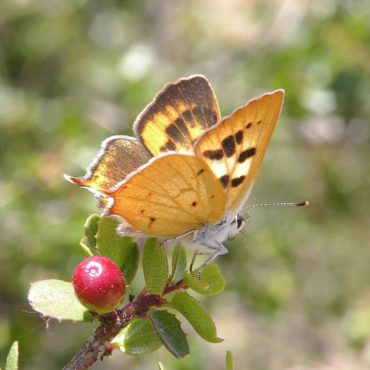Description
2,4,11,59
Spiny redberry is an evergreen shrub that is usually less than six feet (2 m) in height, although shrubs to 10 feet (3½ m) have been reported. The shrub is dense, with many short, stiff branches. The smallest branches are reddish, often sparsely leafed or leafless along the outer part and pointed at the end.
The small leaves are glossy and bright green, on short reddish petioles that are subtended by two inconspicuous stipules. Leaves are ovate or obovate, usually less than 3/4 inch (1.8 cm) in length. The margins are entire or sharply toothed. The midvein is prominent on the lower surface and depressed on the upper surface.
The tiny flowers, less than 3/16 inch (4.5 cm) across, occur in small inconspicuous clusters along young branches. Petals are absent, and the four spreading, triangular sepals resemble petals. Sepals are cream-colored, sometimes edged or tipped with red-brown. Flowers are usually (but not always) functionally male or female and the male and female flowers are usually (but not always) found on different plants. A male flower has four pollen-producing stamens that stand erect and alternate with the sepals and a vestigial pistil. The female flower is generally similar in appearance to the male, but it is slightly smaller, with narrower sepals and a more rounded base. There is a functional pistil with a two-chambered ovary and a style that is forked at its midpoint. Four rudimentary stamens are present. Spiny redberry blooms mainly in Feb. and May.1
In spite of the common name, the conspicuous fruit is not technically a berry, but a “drupe” like the fruit of a plum or cherry. A drupe is characterized by a fleshy exterior layer usually surrounding a single seed, which is enclosed in a hard, leathery wall. The ripe spiny redberry fruit is spherical, about 1/4 inch (0.6 cm) in diameter and bright red, and there may be two seeds in each drupe.

